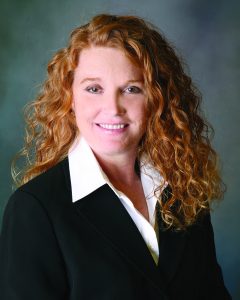Category: Mental Health

William Hartmann, MD; Lindner Center of HOPE Psychiatrist, Medical Director, Willliams House
Navigating the realm of psychiatric medications can be challenging, often hindered by common misperceptions. Managing and understanding expectations can go a long way in ensuring treatment success. Seeking out help is often complicated by preconceived ideas. Preconceived notions about psychiatric medication often get in the way of successful treatment. Building a trusted relationship paves the way for educational opportunities, treatment adherence, and recovery.
5 Common Misperceptions of Psychiatric Medications
1 – “It’s just a chemical imbalance.”
The advent of serotonin reuptake inhibitors (SSRIs), with their efficacy for depression and anxiety and reduced side effect risk compared to their predecessors, remains a major milestone in psychiatric care. It became increasingly commonplace to hear of the “chemical imbalance” of these illnesses. For as much as “chemical imbalance” helped spread the word that this is a brain disorder, not a moral failing, this wording unfortunately has promoted an overreliance on the power of the medication. The medications do alter brain chemistry and lead to a chain of biochemical events influencing symptom reduction and recovery. What the medication will not do is eliminate stressors, change one’s lifestyle, or cause satisfaction with an otherwise unhealthy situation. I find that those with the greatest success are those who recognize that medication helps facilitate deeper work in psychotherapy and making constructive changes to promote wellness. The medication may help substantially, but it will not do all of the work.
2 – “I don’t want to be a zombie.”
Many will fear that medication will change their personality substantially, or cause them to feel or appear sedated. The goal of treatment is to help a person function as their best self, not change who they are, or make them void of emotional response. While any effective medication has side effect potential, most patients can work with their prescriber to find the right fit for them to manage the illness with success.
3 – “I don’t want to take happy pills.”
Addressing the stigma associated with psychiatric medications, particularly antidepressants, is crucial. Depression is more than the usual sadness one inevitably encounters from time to time. Treatments for mood disorders are not instant “uppers” nor are they performance-enhancers.
The effects of antidepressants are gradual and usually occur over about 4-6 weeks. Moreover, they will not make you “happy” so much as reduce and resolve symptoms of clinical depression. They aim to restore the capacity for contentment and joy. Treatment allows reduction of the “thought constriction” which limits one’s perspective to seeing few options. One may then see the broader opportunities to connect with core values in a rewarding way. It is about getting back to being your best self. Psychotherapy helps bring this together.
4 – “I don’t want to be dependent on a medication.”
The fear of dependency on medication is a valid concern for many. Taking medication may be a constant reminder of the illness, but the illness exists whether taking the medication or not. The majority of psychiatric medications, except benzodiazepines, do not produce true physical dependence. Turning the focus to the goals of recovery, and how the medication is part of the process, can help.
5 – “Don’t you put everyone on medication?”
There is not a one-size-fits-all approach. A common misconception is that every psychiatric patient is put on medication. Correct diagnosis is essential and, for some conditions, medication may not be the appropriate first line of treatment. A large portion of a psychiatrist’s work involves evaluating and managing the use of psychiatric medications. Most people will not come my way unless they have reached a point where medication appears necessary. A person may be experiencing sadness, grief, anxiety, milder depression, or an adjustment problem that is better suited for psychotherapy. A person might make gains in exposure response prevention for anxiety without the aid of medication. There may not be adequate or applicable evidence for medication helping a particular problem. Evidence is weaker for antidepressants in milder major depressive disorders, for example, but antidepressant treatment is recommended for moderate to severe depression. In some conditions, such as bipolar I disorder or schizophrenia, medication is crucial for the treatment and prevention of recurring episodes of illness. In opiate use disorders, prescription medications such as naltrexone and buprenorphine have emerged as a best practice, something that was not the case decades ago.
Ultimately, the decision regarding the role of medication for a given individual is between patient and prescribing clinician. Addressing attitudes and expectations early in the process can make a better experience for everyone. Empower yourself with knowledge to make the best choices for your mental health journey.
For more information and resources on psychiatric medications, contact us at Lindner Center of HOPE.





